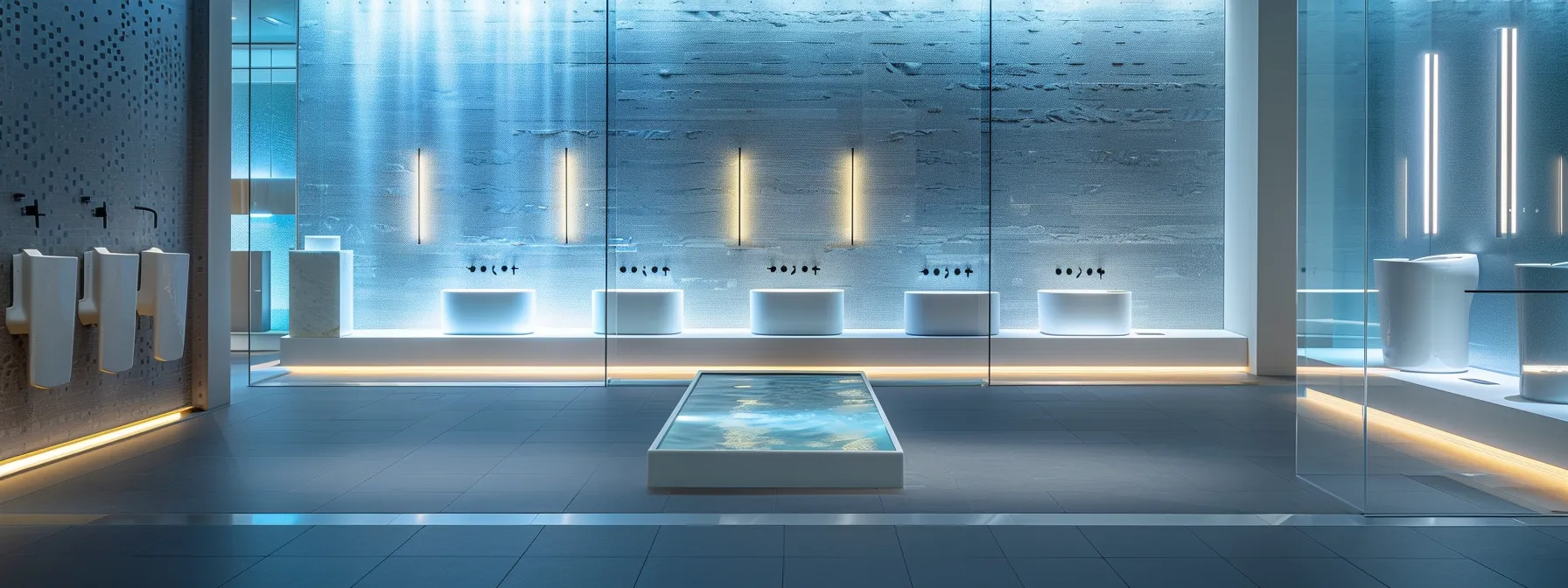

When planning a bathroom remodel, many homeowners underestimate how much location can affect the overall cost. Geographic area, local market demand, and property types all play significant roles in determining remodeling expenses. This article will explore how these factors influence your bathroom remodel price and help you understand hidden costs you may encounter. By reading this, homeowners will gain insights that enable them to budget more effectively and make informed decisions, ensuring their renovation aligns with their financial goals.
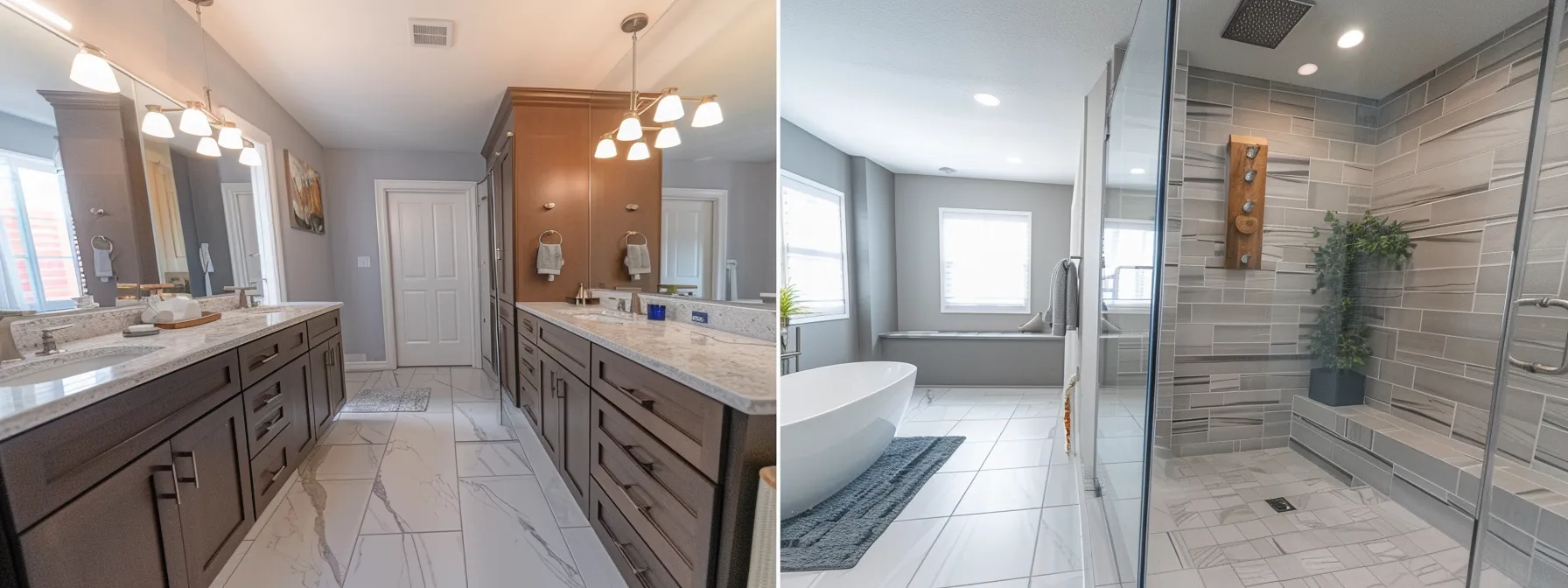
Understanding how geographic location impacts bathroom remodel costs is essential for homeowners. Regional pricing trends often dictate the overall budget, as labor costs can vary greatly by city or region. Additionally, local materials like quartz countertops or porcelain tiles influence choices and expenses. It is crucial to consider permit costs, regulations, and how climate affects design elements. Typically, urban areas may see higher costs compared to rural settings, making a thorough analysis beneficial in the planning process.
Regional pricing trends play a significant role in determining the overall cost of a bathroom remodel project. In areas with high demand for remodeling services, such as urban centers, homeowners may encounter elevated prices due to increased labor costs and the expense of materials like wood for custom cabinetry. Conversely, in rural settings, these costs may be lower, offering a more budget-friendly option for those looking to enhance their bathrooms.
Additionally, the choice of a bathroom remodeling contractor can heavily influence pricing based on their expertise and familiarity with local markets. Areas that experience seasonal fluctuations may also see varying demand for bathroom renovations, impacting overall project costs. Homeowners should be prepared to adjust their budgets accordingly to reflect their specific local market conditions:
Labor costs for bathroom remodeling projects can vary significantly from one city or region to another. In metropolitan areas, the demand for skilled professionals often drives up the price of labor due to competitive market conditions. Homeowners who are looking to install laminate flooring or other materials may find themselves facing higher costs for both labor and materials compared to those in rural areas, where the demand is lower and competition among contractors is less intense.
Additionally, the type of contract chosen for the bathroom remodel can influence overall labor costs. Fixed-price contracts may offer predictability in budgeting, while hourly rates might lead to unexpected expenses if the project takes longer than anticipated. Homeowners should consider these factors carefully and communicate clearly with their contractors to ensure that the bathroom remodel stays within budget, avoiding the need for additional credit to cover unplanned costs.
Local materials have a profound impact on the budget choices in a bathroom renovation project. Homeowners should consider sourcing materials that are abundant in their region, as this can lead to substantial savings. For example, using locally sourced stone or tile may not only reduce transportation costs but also align with local interior design trends, enhancing the project’s overall aesthetic while maintaining regulatory compliance with local building codes.
The complexity of material selection also plays a role in budgeting for a remodel. Regions known for specific construction materials often see more competitive pricing, as local suppliers can offer better rates. By choosing materials that reflect the environment and community values, homeowners can create a functional and inviting space while managing costs effectively.
Understanding the permit costs and regulations is essential for homeowners planning a bathroom remodel. Different regions have varying rules that dictate the necessary permits for projects. For instance, in urban areas, the permitting process can be more stringent and expensive due to safety regulations, requiring homeowners to consider these factors when calculating their overall budget. Investing in compliant materials, such as solid surface countertops or granite, can positively affect the return on investment by ensuring the remodel meets local standards.
Local building codes may also dictate specific requirements for safety features, such as electrical installations and plumbing updates. This can influence the scope of the project and associated costs. Homeowners securing a mortgage for their renovation should be aware that compliance with local regulations can impact the appraisal value of their home. Therefore, understanding the local landscape of permits and regulations not only aids in keeping the remodel within budget but also enhances the overall value and safety of the home.
Climate plays a significant role in shaping the design and materials used in a bathroom remodeling project. Homeowners in humid areas may prioritize waterproofing features and moisture-resistant materials, such as vinyl or tile, to prevent mold growth and ensure longevity. Additionally, heating and ventilation systems are crucial in colder climates, influencing the selection of lighting and fixtures that can withstand extreme temperatures without incurring excessive expense.
The choice of design elements is also affected by local climate conditions. For example, homeowners in sunny regions might focus on maximizing natural light through strategic window placement or skylights to brighten their space. Understanding these climate impacts on design not only helps in selecting appropriate materials but also ensures that the bathroom remodel meets both functional and aesthetic needs effectively.
Urban areas typically experience higher prices for a full bathroom renovation compared to rural settings. This increase in cost is often attributed to greater demand for skilled labor and materials such as marble countertops and high-quality fixtures. Additionally, adherence to strict building codes in cities may result in more complex permitting processes, further elevating overall project costs for homeowners.
In contrast, rural areas generally offer a more budget-friendly approach to a full bathroom remodel. With lower labor costs and a more relaxed approach to building code enforcement, homeowners can find significant savings. Moreover, the availability of local materials often leads to cost-effective options that align with the homeowner’s vision without compromising quality.
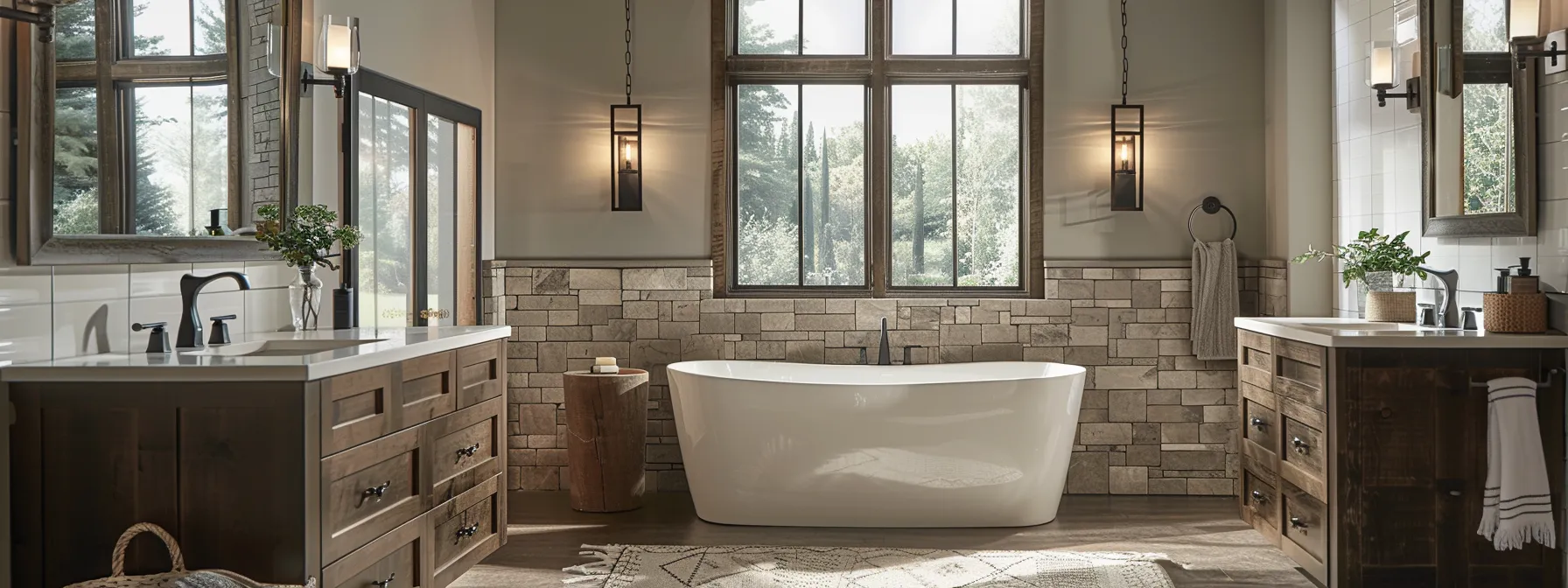
The impact of local market demand significantly influences bathroom remodel prices. Factors such as housing demand, seasonal fluctuations, and neighborhood prestige all shape pricing structures. The level of local competition among contractors can also affect rates, while trends in buyer preferences and property values play crucial roles in determining renovation budgets. Understanding these elements offers valuable insights to homeowners planning their remodel.
The impact of housing demand on remodeling prices is substantial, particularly in regions with a competitive market. When the demand for homes is high, homeowners often invest in significant renovations to enhance property values. The presence of skilled general contractors becomes critical in such markets. Homeowners may find themselves adjusting budgets for materials, such as cabinetry and sinks, which can escalate in price due to increased demand.
In areas where the housing market is booming, the need for services like demolition can rise, further affecting overall remodeling costs. Homeowners should be aware that prices for common materials, like ceramic tiles, may fluctuate based on local demand conditions. Understanding this relationship can help in planning an effective budget for a bathroom renovation:
Seasonal fluctuations can significantly impact the pricing of a bathroom remodel. During peak seasons, such as spring and summer, many homeowners initiate renovations, leading to higher demand for contractors and materials. This surge in activity often results in increased costs, as contractors may charge premium rates to accommodate a greater number of projects. Conversely, in the off-season, demand typically decreases, providing homeowners with opportunities to secure better pricing for their bathroom remodel. Understanding these seasonal trends is essential for homeowners looking to budget effectively for their renovations.
Moreover, specific issues like potential mold or water damage can arise throughout the year, influencing both costs and timelines. For instance, heavy rainfall in certain seasons may necessitate thorough inspections before a remodel, incurring extra expenses and potentially delaying projects. By being aware of these environmental factors, homeowners can better prepare for the costs associated with their bathroom remodels and ensure they account for any inspections required to address moisture-related issues:
The prestige of a neighborhood significantly influences the cost of bathroom remodeling projects. Higher-end neighborhoods typically have a higher cost of living, which often translates to increased labor and material costs. For instance, selecting luxurious features such as glass tile for flooring can elevate the overall price of a remodel, as homeowners in upscale areas may seek premium finishes that align with their community standards.
Moreover, neighborhood prestige often dictates the level of customization and quality required in home improvement projects. Contractors familiar with affluent markets often adjust their pricing structures to meet client expectations, ensuring that the quality and design reflect the neighborhood’s high standards. Homeowners should consider these factors when budgeting for a remodel:
Local competition among contractors significantly affects the pricing of bathroom remodels, including installations of features like bathtubs and hot tubs. In areas where multiple contractors vie for business, homeowners often benefit from competitive pricing as contractors adjust their rates to attract clients. By comparing bids and evaluating the services offered, homeowners can find a contractor who meets their budget and expectations for quality.
The level of competition can also impact the breadth of services offered for bathroom renovations. In high-competition regions, contractors may provide attractive packages that include upgrades for showers, utility installations, or unique room designs to differentiate themselves. Homeowners should take advantage of this variety, ensuring they select a contractor who not only fits their financial plan but also aligns with the vision they have for their ideal bathroom.
Trends in buyer preferences can significantly influence the pricing of bathroom remodels, particularly regarding materials like tile. Homeowners are increasingly opting for modern and stylish options, such as large-format tiles or intricate mosaic patterns, which can drive up costs due to their complexity and labor requirements. Understanding these preferences helps homeowners navigate their budget and select options that align with their vision while being mindful of expenses.
Moreover, regional aesthetics can guide material choices, adjusting the demand for specific styles and finishes. In urban areas, the preference for contemporary looks may push prices higher for trends like patterned subway tiles or eco-friendly alternatives, while rural homeowners might gravitate towards traditional styles that could offer lower cost options. Recognizing these shifts enables homeowners to plan effectively and make informed decisions that suit both their taste and budget.
Property values are a critical factor that shapes bathroom renovation budgets. In regions where home values are on the rise, homeowners often invest more in renovations to enhance their property’s appeal and marketability. This can lead to higher spending on quality materials and fixtures, as well as premium design features that align with the expectations of potential buyers in these valuable neighborhoods.
Conversely, in areas where property values are lower, homeowners may opt for cost-effective remodeling options that prioritize function over luxury. Understanding local property trends enables homeowners to set a realistic budget for their bathroom remodel, ensuring that the investment made aligns with the overall value of their home. By striking the right balance between quality and budget, homeowners can achieve a successful remodel that not only meets their desires but also reflects the economic conditions of their local market.
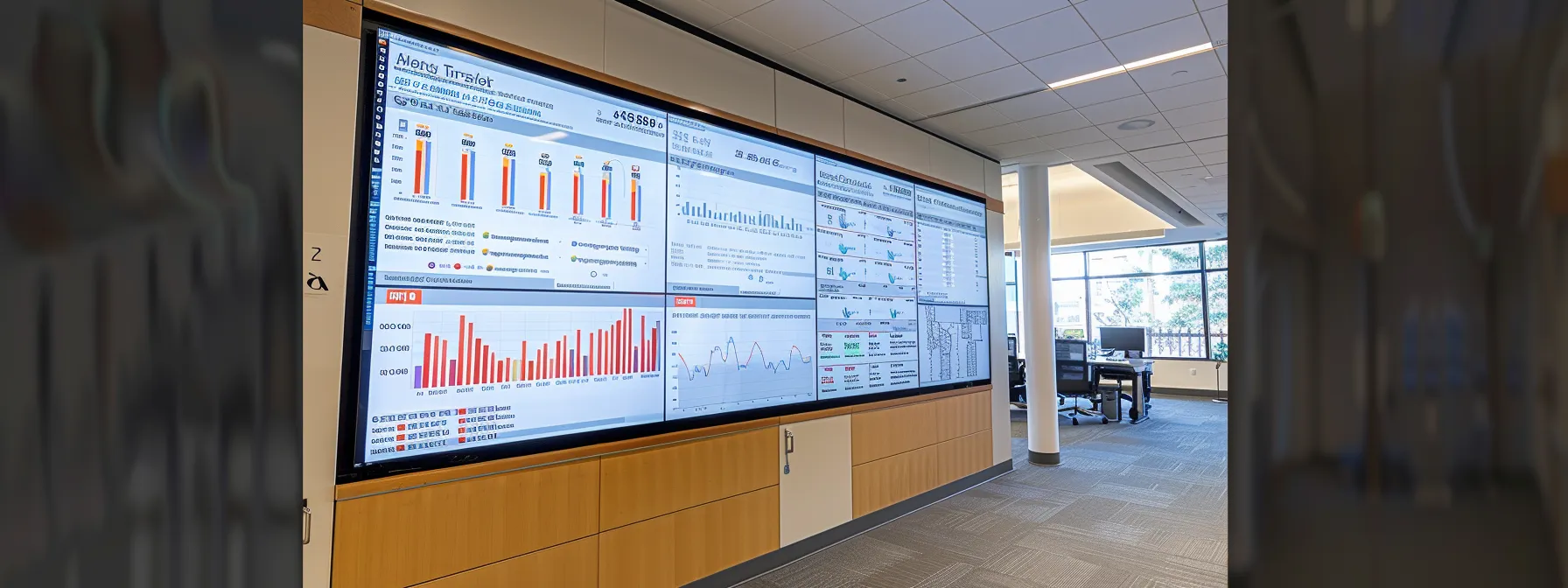
Transportation costs for bathroom remodels can significantly impact overall project budgets. Homeowners must calculate the effect of delivery fees, assess how distance can elevate contractor hourly rates, and explore potential supply chain issues that might inflate costs. Additionally, examining the availability of sustainable materials and the influence of local suppliers can lead to strategies for minimizing transportation expenses.
Delivery fees can significantly affect the overall budget for a bathroom remodel. Homeowners should account for these costs, especially when sourcing materials from distant suppliers. For example, purchasing tiles or fixtures from a specialty store a few towns away can add unexpected delivery charges, which may impact the total material budget and lead to overspending.
It is wise to compare local suppliers and investigate their delivery options. By opting for materials from providers within the community, homeowners can often minimize transportation costs, making the remodeling project more affordable. To effectively manage the budget, homeowners might consider the following factors:
Distance can significantly impact contractor hourly rates during a bathroom remodel. Contractors typically charge more for projects that require travel over long distances as they account for the additional time and expenses associated with getting to the job site. Homeowners should consider local contractors to minimize these costs, ensuring their project budget stays intact while benefiting from professionals familiar with regional building standards and materials.
Furthermore, homeowners should be mindful that some contractors may include travel costs in their bids, resulting in higher overall prices than expected. When assessing contractor proposals, it is essential to ask about any travel fees and how far they are willing to travel without additional charges. This understanding can help homeowners make informed decisions in selecting the most cost-effective and reliable contractor for their bathroom remodel:
Supply chain issues can greatly affect the costs associated with a bathroom remodel, particularly regarding materials. Delays in shipping or shortages of specific products, such as tiles or fixtures, can lead to increased prices and extended project timelines. Homeowners should be aware that sourcing materials from local suppliers can help mitigate these challenges, as proximity often results in fewer disruptions compared to relying on distant vendors.
Furthermore, fluctuating availability of materials can impact budget planning. For instance, if a popular faucet style becomes scarce due to increased demand or transport difficulties, its price may rise sharply. Homeowners may need to remain flexible with their choices or seek alternatives to ensure that their bathroom remodel stays on track without incurring unexpected expenses. By staying informed about local market conditions, they can make smarter decisions that fit both their vision and budget.
To effectively minimize transportation expenses during a bathroom remodel, homeowners should prioritize sourcing materials from local suppliers. Choosing nearby vendors can significantly reduce delivery fees and shorten lead times, allowing for a more streamlined renovation process. In addition, local suppliers are often more familiar with regional design trends, which can enhance the aesthetic appeal of the remodel while keeping costs manageable.
Another strategy involves planning the project well in advance to avoid rushed deliveries. When homeowners order materials ahead of time, they can take advantage of budget-friendly options, as there is no urgency that might lead to inflated shipping costs. Engaging with local contractors who understand these dynamics can also lead to better pricing, as they may offer insights on effective material sourcing while managing the budget effectively for a successful bathroom renovation.
The availability of sustainable materials can vary significantly depending on geographic location. In urban areas, homeowners might find a wider selection of eco-friendly options, such as reclaimed wood or recycled tiles, from local suppliers. These sustainable choices not only minimize transportation costs but also align with growing consumer preferences for environmentally responsible building practices.
Conversely, in rural settings, the selection of sustainable materials may be limited, often forcing homeowners to rely on standard options that may not focus on sustainability. However, local contractors may have insights into regional resources that are both eco-friendly and cost-effective. By engaging with knowledgeable professionals, homeowners can identify unique sustainable materials available nearby, reducing transportation expenses while enhancing the overall environmental impact of their bathroom remodel.
Local suppliers play a crucial role in influencing the overall costs of a bathroom remodel. When homeowners source materials from nearby vendors, they can significantly reduce transportation expenses, which in turn lowers the total project budget. For example, purchasing tiles or fixtures locally can save on delivery charges that might otherwise add substantial costs if sourced from distant suppliers.
Furthermore, local suppliers often have a better understanding of regional design trends and material availability. This localized knowledge allows homeowners to select options that not only align with their aesthetic preferences but also foster budget-friendly decisions. By collaborating with nearby contractors familiar with the local market, homeowners can access valuable insights on optimizing both their material choices and overall project costs.
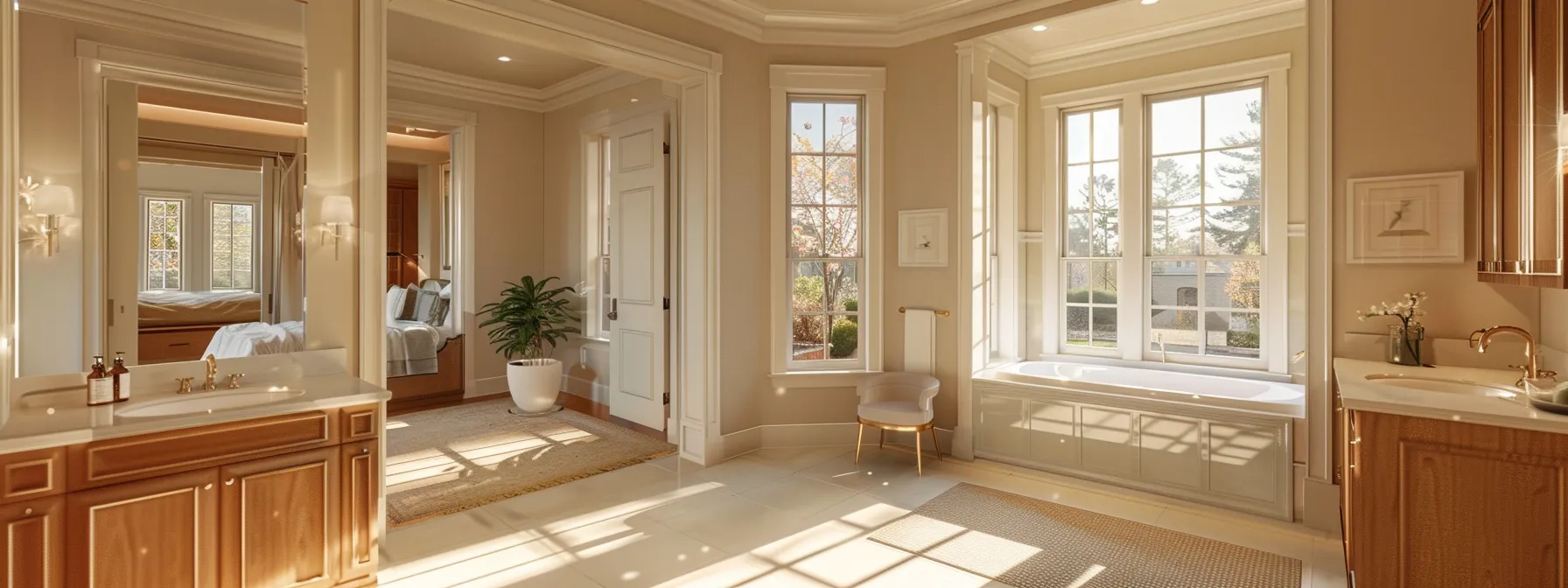
The type of property significantly impacts bathroom remodeling expenses in various ways. Cost implications for apartments differ from houses due to space and layout considerations. Historical properties may present unique budgeting challenges linked to preservation standards. Additionally, plumbing and electrical layouts can affect overall costs. Different architectural styles can also influence material choices, while remodeling multifamily units introduces potential complications. Furthermore, condo association rules may impose additional expenses that homeowners must navigate.
Understanding these elements helps in making informed decisions regarding remodeling budgets and expectations, ensuring that each aspect aligns with the unique needs of the property type.
When it comes to bathroom remodeling, the type of property significantly influences the overall expenses. Apartments often have stricter space limitations and building regulations, which can lead to higher costs per square foot for renovations. Homeowners in these settings may have to work with multi-unit considerations, requiring careful planning around structural changes, which increases labor costs compared to single-family homes.
On the other hand, houses generally offer more flexibility in design choices, allowing for potential savings during a remodel. With fewer restrictions and more available space, homeowners can opt for larger fixtures and custom features without incurring significant additional expenses. These differences highlight the need for homeowners to assess their specific property type when budgeting for a bathroom remodel:
Renovating historical properties often presents unique challenges that can significantly impact renovation budgets. Homeowners must navigate strict preservation guidelines and comply with local regulations that dictate what changes can be made to maintain the property’s original character. This can lead to higher costs for specialized materials and skilled labor familiar with period-appropriate design, making it essential for homeowners to factor these expenses into their remodeling plans.
For instance, sourcing authentic fixtures or restoring original features like vintage tiles can elevate costs compared to standard renovation projects. Homeowners should also consider that insurance and potential structural repairs could add to the overall budget. By understanding these complexities, they can better prepare their finances and find strategies to balance historical integrity with modern functionality in their bathroom remodel.
The layout of plumbing and electrical systems plays a critical role in bathroom remodeling expenses, particularly in properties with unique configurations or older designs. For instance, relocating the plumbing for a bathtub or sink can increase both labor and material costs significantly because contractors may need to reroute pipes or install new electrical wiring to support updated fixtures. Homeowners should anticipate these factors when planning their budget, as adjusting these vital systems can affect the overall price of the remodel.
Additionally, the complexity of existing plumbing and electrical layouts can vary based on property type and location, impacting the scope of work involved. In older homes, outdated systems may require upgrades to meet current building codes, further adding to remodeling costs. Understanding these implications can help homeowners make informed decisions about their renovations, ensuring that they select fixtures and layouts that align with both their budget and the demands of the property.
The architectural style of a home significantly affects the expenses involved in a bathroom remodel. Different styles, such as modern, traditional, and colonial, each have unique characteristics that demand specific materials and design elements, which can influence overall costs. For example, a modern bathroom might incorporate sleek tile and glass designs, whereas a traditional style may require intricate moldings and high-quality fixtures, leading to variability in expenses based on the chosen aesthetic.
Additionally, the complexity of the architectural style can present unique challenges during the remodeling process. Older properties, often reflecting traditional or historical designs, may possess outdated plumbing or electrical systems that require upgrades to meet current building codes. Such adjustments can lead to increased labor and material costs when compared to simpler, more contemporary structures, making it essential for homeowners to account for these factors when planning their budget and expectations for the remodel:
Remodeling multifamily units presents unique challenges often influenced by local regulations and building codes. Homeowners must navigate stricter guidelines concerning shared plumbing and electrical systems, which can complicate efforts to update bathrooms effectively. Any changes must also accommodate multiple units, meaning that decisions made in one apartment can significantly impact others, leading to increased planning and coordination costs that can drive up overall expenses.
Additionally, coordinating schedules with a diverse range of tenants in multifamily buildings complicates the remodeling process. Homeowners must ensure that renovations do not disrupt residents’ daily lives, which may lead to longer completion times and potential delays. Budgets must also reflect the possibility of more expensive contractor bids due to the additional logistics required for working in these settings, making it essential to factor these elements into any remodeling plan.
Condo association rules can greatly influence expenses during a bathroom remodel. These regulations often dictate what alterations can be made, with restrictions on materials, colors, and fixture selections. Homeowners should carefully review their association’s guidelines to ensure compliance, as violations may lead to fines or mandated restorations that can add unexpected costs to the project.
Moreover, obtaining necessary approvals from the condo association can add time to the remodeling timeline, potentially increasing labor costs. Homeowners must factor in the possibility of additional fees for permit applications or even assessments from the association depending on the scope of the remodel. Understanding these implications not only helps in budgeting effectively but also ensures a smooth renovation process that aligns with community standards.

Understanding regional trends in bathroom design and renovation can guide homeowners in making informed decisions for their projects. By identifying popular design styles in the local market, exploring trends in eco-friendly renovations, and reviewing technology integration preferences, homeowners can create spaces that meet contemporary demands. Additionally, assessing changing preferences for layouts, favored materials, and specialty features helps ensure that remodeling efforts align with local tastes and maximize value.
Regional preferences for bathroom design styles can greatly affect remodeling decisions and costs. For example, homeowners in urban areas may lean towards modern, sleek designs that emphasize minimalist aesthetics and high-tech fixtures, which often come with a premium price tag. In contrast, those in suburban or rural regions may prefer more traditional styles that incorporate classic materials and craftsmanship, potentially offering more budget-friendly options.
Additionally, trending design styles can reflect local cultural influences and climate considerations, impacting choices for fixtures, colors, and layouts. For instance, in humid coastal regions, homeowners might favor moisture-resistant materials and light, airy colors to create a soothing environment, while in colder climates, warm tones and robust insulation features become more popular. Understanding these local design trends helps homeowners make informed decisions that align with both their personal taste and budget constraints during a bathroom renovation.
Eco-friendly bathroom renovations are increasingly popular among homeowners, driven by a desire to reduce environmental impact and improve energy efficiency. Local trends often dictate the availability and pricing of sustainable materials, such as low-flow fixtures and recycled tiles. In urban regions, where sustainability is a high priority, homeowners may find a wider array of eco-friendly options, often at a premium cost due to demand.
Moreover, incorporating eco-friendly elements can enhance a bathroom’s overall appeal and functionality, prompting homeowners to consider design features that align with modern sustainability practices. Examples include using bamboo flooring or eco-conscious cabinetry, which can add value to the property while also appealing to environmentally-minded buyers. Making informed choices can help navigate the costs associated with these upgrades:
Homeowners increasingly seek to integrate advanced technology into their bathroom renovations, reflecting a growing trend in modern design. Features such as smart faucets, automated lighting systems, and intelligent temperature controls not only enhance convenience but can also improve energy efficiency. This demand for tech-savvy solutions can elevate remodeling costs, particularly in urban areas where high-tech fixtures may come with premium price tags due to greater availability.
Local market influences play a crucial role in shaping the types of technology homeowners choose to incorporate. Regions with a strong focus on sustainability might see an uptick in requests for water-saving devices and energy-efficient appliances, while spaces in metropolitan areas may lean towards luxury items like built-in speakers or touchless controls. Understanding these preferences can help homeowners align their remodeling choices with regional trends, ensuring they achieve both functionality and style within their budget.
In the context of bathroom remodels, changing preferences for layouts often reflect broader regional trends that impact costs. For example, homeowners in urban areas may favor open-concept designs that prioritize maximizing space, leading to an increased need for custom cabinetry and innovative storage solutions. This shift towards multifunctional designs not only enhances the usability of the bathroom but can also elevate material and labor costs significantly, especially when specialized contractors are needed to execute such designs efficiently.
Conversely, in suburban and rural settings, traditional layout preferences may still prevail, emphasizing separate spaces for bathing, grooming, and storage. These more conventional designs can allow for cost savings, as they typically involve simpler plumbing and electrical configurations and may not require high-end materials. Understanding these regional variations helps homeowners effectively plan their remodeling projects, ensuring that their bathroom design aligns with their location-specific trends while staying within budget.
In every region, specific materials become popular choices for bathroom remodels based on local availability and preferences. For example, homeowners in urban areas often opt for high-end finishes like quartz and glass tiles due to their modern appeal and reflective qualities, which align with contemporary design trends. In contrast, rural homeowners may lean toward more traditional materials such as ceramic tiles or laminate countertops, favored for their durability and cost-effectiveness.
Understanding the favored materials in each locality enables homeowners to make informed decisions that align with their vision and budget. Local suppliers frequently offer products that reflect regional styles and tastes, making it essential for homeowners to explore nearby options when planning a remodel. Choosing materials that are abundant in the area not only helps manage costs but also enhances the aesthetic of the bathroom in a way that resonates with the surrounding environment.
Specialty features in bathroom design are often influenced by regional preferences and lifestyles, creating unique demands for homeowners. In urban areas, elements such as smart technology integration, including automated faucets and high-efficiency lighting, can drive up remodeling costs due to their modern appeal and functionality. Conversely, rural homeowners may prioritize practical features like larger storage solutions and rustic finishes that reflect local aesthetics, potentially leading to a variety of choices that align with budgets and design intentions.
Understanding the trending specialty features in each region can significantly impact renovation decisions and expenses. For example, many homeowners now favor sustainable options, such as recycled materials and low-flow fixtures, which can both enhance the design and reduce water usage. This trend not only aligns with growing environmental concerns but also resonates with eco-conscious buyers, adding a layer of value to their homes while meeting local standards:

Seasonal changes can significantly impact bathroom remodel budgets. This section will analyze cost variations between peak and off-peak seasons, determining contractor availability during these times. It will review how weather influences construction schedules, assess material availability fluctuations, and explore potential discounts that arise seasonally. Identifying optimal times for budget-friendly remodeling is crucial for homeowners looking to maximize their investment.
Cost variations between peak and off-peak seasons can significantly influence bathroom remodel budgets. During peak seasons, such as spring and summer, the demand for contractors surges, leading to higher prices for both labor and materials due to the competition among homeowners seeking renovations. For instance, in urban areas, homeowners may find themselves paying a premium for skilled professionals as contractors increase their rates to accommodate the high volume of projects.
In contrast, off-peak seasons, typically fall and winter, can present budget-friendly opportunities for renovations. With lower demand, contractors may offer competitive pricing and special discounts to fill their schedules, allowing homeowners to save on costs. Homeowners should consider planning their remodel during these quieter months, as doing so can help stretch their budgets further while ensuring quality service for their bathroom remodeling needs.
Contractor availability for bathroom remodeling projects varies throughout the year, significantly affecting timelines and pricing. During peak seasons, such as spring and summer, many homeowners seek renovations, leading to increased competition for skilled labor. As a result, contractors may have tighter schedules and higher rates due to high demand, which can impact the overall budget for a bathroom remodel.
Conversely, off-peak seasons, including fall and winter, typically provide more flexibility in contractor availability. This period often sees fewer renovation projects, allowing homeowners to secure better pricing and more immediate access to quality contractors. By planning renovations during these quieter months, homeowners can take advantage of competitive rates and potentially save on costs associated with their bathroom remodels.
Weather conditions can have a significant impact on construction schedules during a bathroom remodel, directly affecting the overall budget. For instance, rainy or snowy periods may delay outdoor work or the delivery of materials, resulting in extended project timelines and potentially increased labor costs as contractors reschedule their work. Homeowners should be mindful of seasonal weather patterns in their region and plan their remodel accordingly to minimize disruptions.
Extreme temperatures also influence the remodeling process, particularly in areas experiencing heat waves or cold snaps. These conditions can hinder workers’ ability to perform certain tasks safely and efficiently, leading to slower progress. By scheduling renovations during milder seasons, homeowners can enhance the likelihood of a smoother, more predictable remodeling timeline, ultimately helping to keep costs in check.
Material availability during seasonal fluctuations can significantly affect the budget for a bathroom remodel. Homeowners often find that sourcing materials becomes more challenging during peak seasons, leading to potential delays and increased costs. For example, popular items like tiles and fixtures may be in higher demand during the spring and summer months, driving up prices as suppliers struggle to keep up with customer needs. This can result in unexpected budget adjustments for homeowners looking to maintain their desired aesthetic while staying within financial constraints.
Conversely, during the off-peak season, materials may be more readily available at competitive prices, allowing homeowners to secure better deals for their bathroom renovation projects. Contractors working during these quieter months are often more flexible and can offer cost savings on both labor and materials due to reduced demand. Understanding how seasonal shifts influence material availability enables homeowners to plan their remodels strategically, ensuring they can access the best options while managing expenses effectively.
Seasonal changes can bring notable discounts and promotions for bathroom remodels, particularly during off-peak months. Contractors often adjust their pricing strategies to maintain business during slower periods, offering special deals to attract homeowners looking to renovate. By choosing to remodel during the fall or winter, homeowners might access better pricing on labor and materials, ultimately lowering their overall project costs.
Additionally, suppliers may provide seasonal promotions on fixtures and materials, such as discounted tiles or faucets, to encourage purchases during these quieter months. Homeowners should keep an eye on local advertisements or reach out to contractors for information on potential promotions that align with their remodeling timelines. Taking advantage of these opportunities can lead to significant savings while also ensuring the renovation meets personal design standards.
Timing plays a crucial role in determining the overall cost of a bathroom remodel, especially when considering seasonal variations. Homeowners are advised to plan their renovations during off-peak months, such as fall or winter, when demand for contractors and materials tends to decrease. This period often presents opportunities for lower labor costs, as many professionals offer competitive pricing to fill their schedules, allowing homeowners to maximize their budgets for quality renovations.
Furthermore, remodeling during these quieter seasons may also open the door to potential discounts on materials, as suppliers seek to attract business when demand is low. Homeowners can capitalize on these savings by purchasing fixtures, tiles, and other essential components at reduced prices. By strategically scheduling their bathroom remodels during off-peak times, homeowners not only benefit from better pricing but can also ensure that they receive the attention and quality service that their projects deserve.
Understanding how location influences bathroom remodel prices is essential for homeowners aiming to maximize their investments. Regional differences in labor costs, material availability, and local regulations directly affect project budgets. Homeowners can save significantly by selecting locally sourced materials and planning renovations during off-peak seasons. By acknowledging these factors, individuals can make informed decisions that ensure their remodel aligns with their financial goals while enhancing their home’s value.
